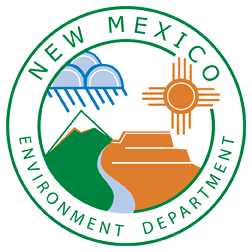Outstanding National Resource Waters (“ONRWs”) are streams, lakes and wetlands that receive enhanced protection against degradation under the State of New Mexico’s Standards for Interstate and Intrastate Surface Waters (“Water Quality Standards”) and the federal Clean Water Act (“CWA”).
An ONRW designation is the highest level of protection against degradation that can be afforded for a waterbody under the State of New Mexico’s Water Quality Standards (20.6.4 NMAC).
What Waterbodies are Eligible for an ONRW Designation?
Waters eligible for ONRW designation include waters that are part of a national or state park, wildlife refuge or wilderness areas, special trout waters, waters with exceptional recreational or ecological significance, and high-quality waters that have not been significantly modified by human activities. Please refer to 20.6.4.9 NMAC for the full list of ONRW eligibility criteria.
What is the Process to Designate a Waterbody as an ONRW?
A water of the state can be designated as an ONRW by filing a petition with the Water Quality Control Commission (WQCC) in accordance with the requirements under 20.6.4.9(B) NMAC and 20.1.6 NMAC.
The petition must include the elements prescribed in 20.6.4.9(A) NMAC, provide a demonstration of eligibility, and set forth sufficient justification for the proposed designation.
As with any change to the State’s Water Quality Standards, public notice of the petition must be provided and a public hearing held before the WQCC. Following the public hearing, the WQCC makes a decision on the petition on whether or not the waterbody will be designated as an ONRW.
Who Can Nominate an ONRW for Designation?
Any person may nominate a surface water of the state for designation as an ONRW by filing a petition with the Water Quality Control Commission.
There are several steps in this process and consultation with NMED is strongly encouraged.
What Waterbodies Have Already Been Designated?
Some ONRW petitions are filed with the WQCC as part of the Triennial Review of the State’s Water Quality Standards while some have been taken independently outside of the Triennial Review.
The Department maintains a list of all WQS amendments which should be referenced prior to petitioning for a new ONRW. In accordance with 20.6.4.9.D(3)(h) NMAC, wetlands designated ONRWs are identified on the Bureau’s EGIS Mapper Application as well as in the Maps and List of Wetlands Within United States Forest Service Wilderness Areas (SWQB 2019). Additionally, detailed maps and lists of unnamed waterbodies designated ONRWs in the Upper Pecos River watershed [WQCC 21-51(R)] are identified in the Maps and List of for Unnamed Tributaries to Perennial Waters and Wetlands in the Headwaters Pecos River Watershed (SWQB 2022). The 2024 ONRW Special Designations covered waters with existing designations (e.g., wilderness areas) and became effective on March 15, 2025.
What Does the ONRW Designation Protect?
New Mexico’s Water Quality Standards establish designated uses for water bodies, set criteria to protect those uses, and establish provisions to preserve water quality. ONRWs are subject to the same water quality criteria as other waters with the same designated uses; however, ONRWs receive additional protection aimed at preventing further degradation.
Degradation of baseline or existing water quality is not allowed in ONRWs except under very limited circumstances. Where water quality meets or exceeds standards, that higher water quality must be protected.
Are Activities Allowed Once an ONRW is Designated?
New land uses or activities can proceed, in accordance with local, state, and federal laws, so long as they do not impact the water quality in the designated ONRW.
Land use activities that may cause impacts to water quality are evaluated based on the source of the pollutant:
Point Source Activities
A proposed activity on public or private land that requires a water quality protection permit would be reviewed during the permitting process.
- Section 404 permits are required for the discharge of dredged or fill material into a waterway or wetland
- National Pollutant Discharge Elimination System (“NPDES“) permits are required for point source discharges, including stormwater runoff from construction sites.
Non-Point Source Activities
Non-point source activities on public or private land that have the potential to cause degradation in an ONRW are not allowed, with the following exceptions pursuant to 20.6.4.8(A)(3) and (4) NMAC:
- Activities associated with restoration or maintenance of the chemical, physical or biological integrity of the water.
- Activities that result in temporary and short-term degradation necessary to accommodate public health or safety in the area in which the ONRW is located, pending public review, comment and the Water Quality Control Commission’s approval;
- Emergency response actions that may result in temporary and short-term degradation to an ONRW to mitigate the immediate threat to public health or safety. The required public review, comment and the Water Quality Control Commission’s approval must be conducted following any emergency response actions;
- Pre-existing land use activities allowed by federal or state law prior to designation as an ONRW, controlled by best management practices (BMPs), so long as there are no new or increased discharges resulting from the activity after the designation of the ONRW.
- Acequia operation maintenance and repairs.
- 2023 U.S. Forest Service and NMED Memorandum of Understanding

